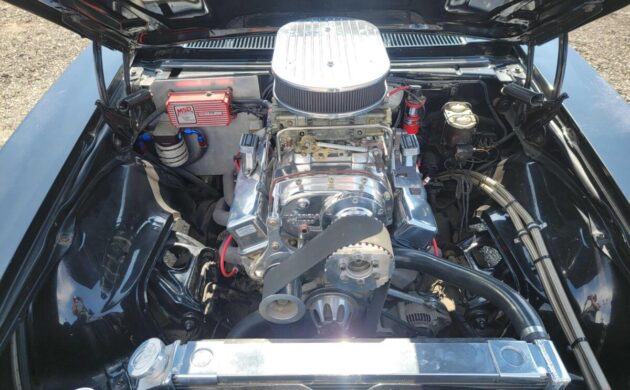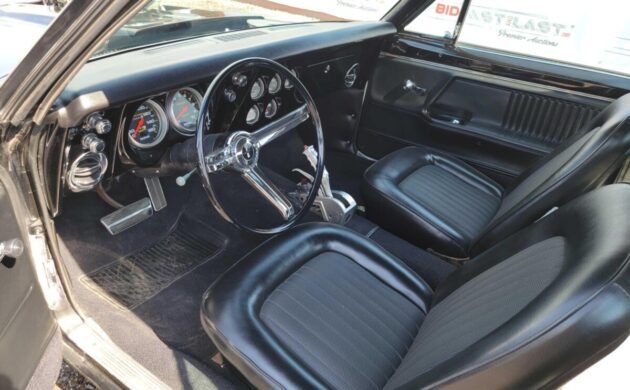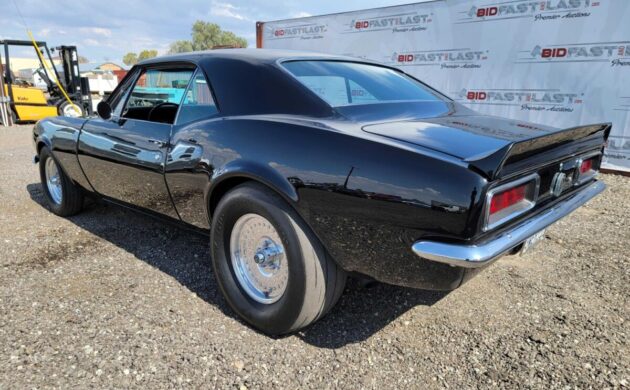One of the great attractions of classic Chevrolets for performance enthusiasts is the ready availability of parts allowing upgrades from meek and mild to potent and wild. This 1967 Camaro doesn’t push that performance envelope to the limit, but it should still pin its occupants in their seats when the driver floors the loud pedal. The seller has tackled their build as a total package, and it needs nothing but a new owner willing to exploit what hides below their right foot. If this is sounding too tempting to resist, the Camaro is listed here on Barn Finds Classifieds in Hesperia, California.
There’s no denying that Ford stole a march on the opposition when it slipped the cover off its First Generation Mustang. While Plymouth beat Ford to the punch by two weeks by releasing its new Barracuda, the Mustang is the model that captured the hearts and wallets of the buying public. It represented one of those historical moments when an entirely new market segment emerged, and the pony car market remains alive and well more than fifty years later. General Motors took three years to join the party, and while Ford enjoyed a head start, the Chevrolet Camaro proved a worth adversary. Mustang sales peaked in 1966, and Chevrolet stole an impressive 220,906 potential customers during 1967. This Camaro presents well, with black paint that shines impressively. There are a few minor marks and imperfections, but its appearance could be considered above average for a driver-grade car. One characteristic of black paint is that it exposes any imperfections or ripples in the steel beneath. That isn’t an issue with this classic, because the panels are straight, and there’s no evidence of rust. The wheels are aftermarket additions that add a sense of purpose. While the builder cut the hood to accommodate some significant engine upgrades, an unmolested and color-matched hood is included.
One aspect of pony cars that attracted buyers was their affordability. A buyer with an average family could order a new Camaro with a modest engine package and room to seat a couple of children for around the same price as a family sedan. Manufacturers were happy to help with a vast array of engine choices if they sought more power. However, Chevrolet never offered what we find hiding under the hood of this classic. Its engine bay houses a 383ci Stroker small-block, which would provide enough power to satisfy most enthusiasts. For those who crave more, this Camaro’s creator was happy to accommodate because they bolted a Littlefield blower to the top of the motor. It is unclear how much power the driver will have under their right foot, but it should be north of 500hp. There’s no point in having enough power to shift the planet on its axis if the car can’t apply it to the road. Therefore, a three-speed automatic transmission with a stall converter feeds the raging stallions to a bulletproof Ford 9″ rear end. Sensible additions include frame ties that minimize twisting under harsh acceleration and a heavy-duty aluminum radiator to keep temperatures under control. The engine bay is spotless, with no evidence of fluid leaks or other problems. This classic would undoubtedly draw crowds if the new owner lifted the hood at a local Cars & Coffee.
One area of this Camaro needing no attention is its interior. I always hesitate to use the word “perfect” when describing any aspect of a classic car, but this is pretty close. The black vinyl upholstery shows no wear or other problems, while the dash and pad are immaculate. The carpet and headliner are equally impressive, and there are no cracks on the wheel. Sensible changes include a wide array of AutoMeter gauges to monitor the health of the monster under the hood and a Hurst shifter for the upgraded transmission.
Sometimes a classic car can represent more than the sum of its parts, which is the case with this 1967 Camaro. Its tidy appearance and lack of rust will attract some buyers, while others will find its clean interior difficult to resist. However, that blown 383 Stroker small-block will undoubtedly tip the scales for many. Recreating this classic would involve plenty of time, money, and energy. Why not shortcut that process and slip behind the wheel of this turnkey classic? After all, there’s nothing wrong with a spot of instant gratification, is there?





$21,500 looks like a good deal. Too bad that I’m North of the border.
I love the classic Centerline Wheels.
What did Centerline call those? Cragar I think they called him Super trix, I love em but they’re polished, I was a fan of the brushed look.
Centerline calls their version Auto Drag. They’re still available in 15″ diameter sizes from 3.5″-10″ wide.
This looks like a nice car, but it always hurts a little seeing cars (such as 1st gen camaros) with roller coaster-like potential for acceleration, cornering, handling, and thrills, that have been modified for straight line only performance.
Very nice Camaro, but if 220,906 cars sold first year is impressive. What is 472,121 sold for the third year Mustang, with Camaro, Firebird and Cougar all jumping in?
I wouldn’t really say the pony-car market is “alive and well” today, with pretty much the Mustang barely carrying the entire market, the Camaro getting discontinued again, and the Charger going electric.
Nice car. At 21.5K asking price, you cannot build it for that, so I think this one will sell quick.
Posted Aug. 8th.
Nice car has some very impressive points and looks like a pretty balanced build. The price is a true high point I anticipate this will be gone shortly!
I don’t believe that it’s a ’67. My ’67 had white backup lights/split with the red stop lights. The door panels don’t look like mine did either. Are there differences if it’s an SS?
Sadly, I wouldn’t be able to afford gasoline for it.